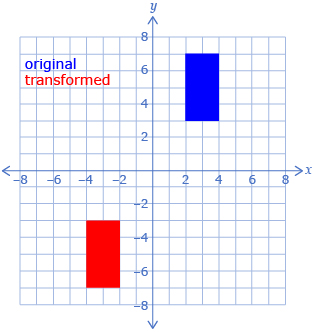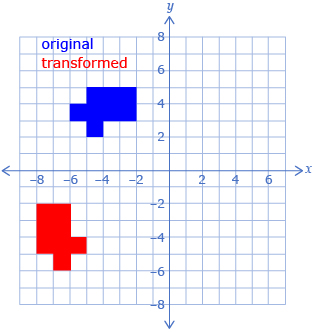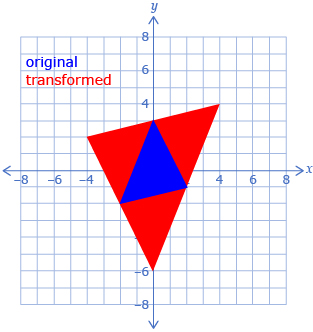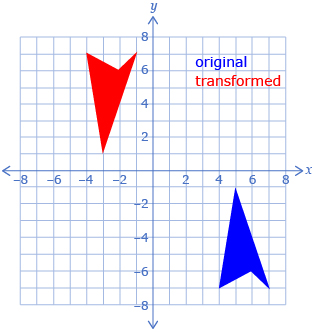Lesson 5
1. Lesson 5
1.5. Explore 4
Module 5: Geometry
In the next activity, you will determine the transformations used to produce some new images from an original shape.
Try This 3
In the following table, each transformed object was made by using two transformations on the original shape.
For each diagram, determine two possible sets of transformations that would produce the red shape from the blue shape. The Transformations Template provided may help you determine the transformations. The table might also help you organize your thinking.
1.
|
Possible Set of Transformations 1:
Possible Set of Transformations 2:
|
2.
|
Possible Set of Transformations 1:
Possible Set of Transformations 2:
|
3.
|
Possible Set of Transformations 1:
Possible Set of Transformations 2:
|
4.
|
Possible Set of Transformations 1:
Possible Set of Transformations 2:
|
![]() Save your responses in your course folder.
Save your responses in your course folder.
Share 2
With a partner or in a group, discuss the following questions.
- Compare the strategies you used to determine the transformations used.
- Which strategy seemed most reliable?
- Which strategy seemed most efficient?
- Which set of transformations from Try This 3 did you find the most difficult to determine? Why do you think this was the case?
![]() If required, place a summary of your discussion in your course folder.
If required, place a summary of your discussion in your course folder.



